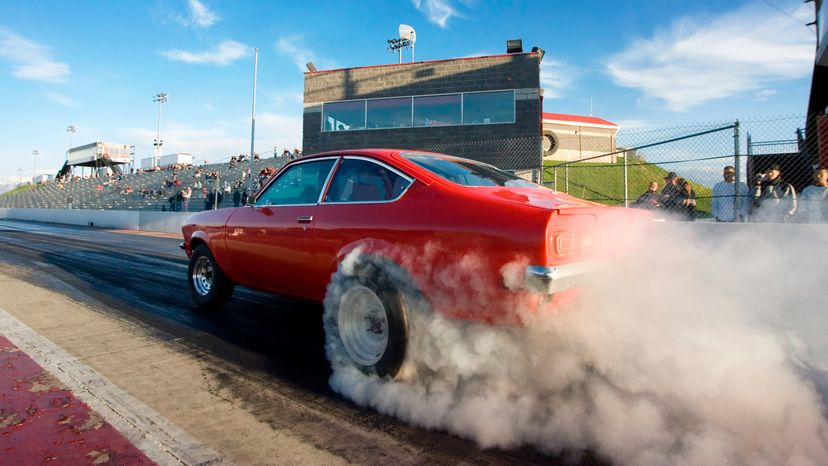
This is a great question that brings together a lot of what we've talked about in other HowStuffWorks articles about drag. And, it turns out, there is a relatively simple way to learn how much drag is on your car.
In the article How Force, Power, Torque and Energy Work you learned about Newton's second law, which we can restate as force (F) equals mass (m) multiplied by acceleration (a).
Advertisement
F = ma or a = F/m
F = ma or a = F/m
What this equation means is that the force applied to the car will cause your car to accelerate. When you are driving along at a constant speed, the power produced in the engine is converted to force at the tires. The drag force acts in the opposite direction and is equal to the force that the engine creates at the tires. Since these forces are equal and opposite, the net force on the car is zero, so the car maintains its constant speed. If you take away the force produced by the engine (by putting the car in neutral, for instance) then the only force on the car is the drag. Since there is a net force on the car, the car will begin to decelerate.
If you can measure the mass of the car and the acceleration, then you can determine the force. You can have the car weighed at a landfill to determine the mass. And you can determine the acceleration by measuring how long it takes the car to slow down when you put it in neutral.
It will help you to understand a little bit about the forces on the car before you set up the experiment.
The force to push a car down the road varies with the speed the car is traveling. It follows an equation of the following form:
road load force = a + bv + cv2
road load force = a + bv + cv2
The letter v represents the velocity of the car, and the letters a, b and c represent three different constants:
- The a component does not depend on speed. This comes mostly from the rolling resistance of the tires, and friction in the car's components, like drag from the brake pads, or friction in the wheel bearings.
- The b component also comes from friction in components, and from the rolling resistance in the tires.
- The c component comes mostly from things that affect aerodynamic drag like the frontal area, drag coefficient and density of the air.
The important thing about this equation is that the force on the car gets larger very quickly at high speeds. The force on the car at 70 mph is much higher than the force at 60 mph.
This means that we want to measure the acceleration in a very narrow speed range. Something like 3 mph or 5 kph should work. We'll do this calculation in metric units because they are easier to work with.
Let's say your car has a mass of 2,000 kilograms (kg) including you and your mother, and you are going to check the acceleration between 100 kph and 95 kph (which gives an average speed of 97.5 kph or about 60 mph so do it on the freeway where the speed limit is high enough). You should choose a flat section of road with little traffic, and do it on a day when the wind is calm and it isn't raining.
Have your mother get the car up to 105 kph, and have your stopwatch ready. Tell your mother to put the car in neutral so you start coasting. When the car slows down to 100 kph, start the timer, and stop it when the car gets to 95 kph. You may want to do this several times, maybe going a different direction on the same part of the freeway. Record all the times and average them.
Let's say the average time was 10 seconds. Now you have all the information you need to calculate the drag force. You just need to do a few conversions. You need your acceleration in meters per second, per second (m/s2).
Your car slowed down 5 kph, which is 5,000 meters per hour, or 1.389 meters per second. It took 10 seconds to slow down this much, so the rate of acceleration was 0.1389 m/s2.
You just plug the mass and the acceleration into the equation F = ma to find the force. There is a handy measurement converter here.
So the force on this hypothetical car at 60 mph is approximately 60 pounds. This also means that in order to make the car go 60 mph the engine has to produce enough power to make 60 pounds of force at the wheels.
We can also figure out how much power this is. Power is equal to force multiplied by speed. So all we have to do is multiply the force in newtons by the speed in meters per second, this gives us the power in watts.
The average speed of your test run was 97.5 kph, which is 27 meters per second. So your power is 278 N multiplied by 27 m/s = 7,500 watts, or 7.5 kilowatts, which is 10 horsepower.
Advertisement


